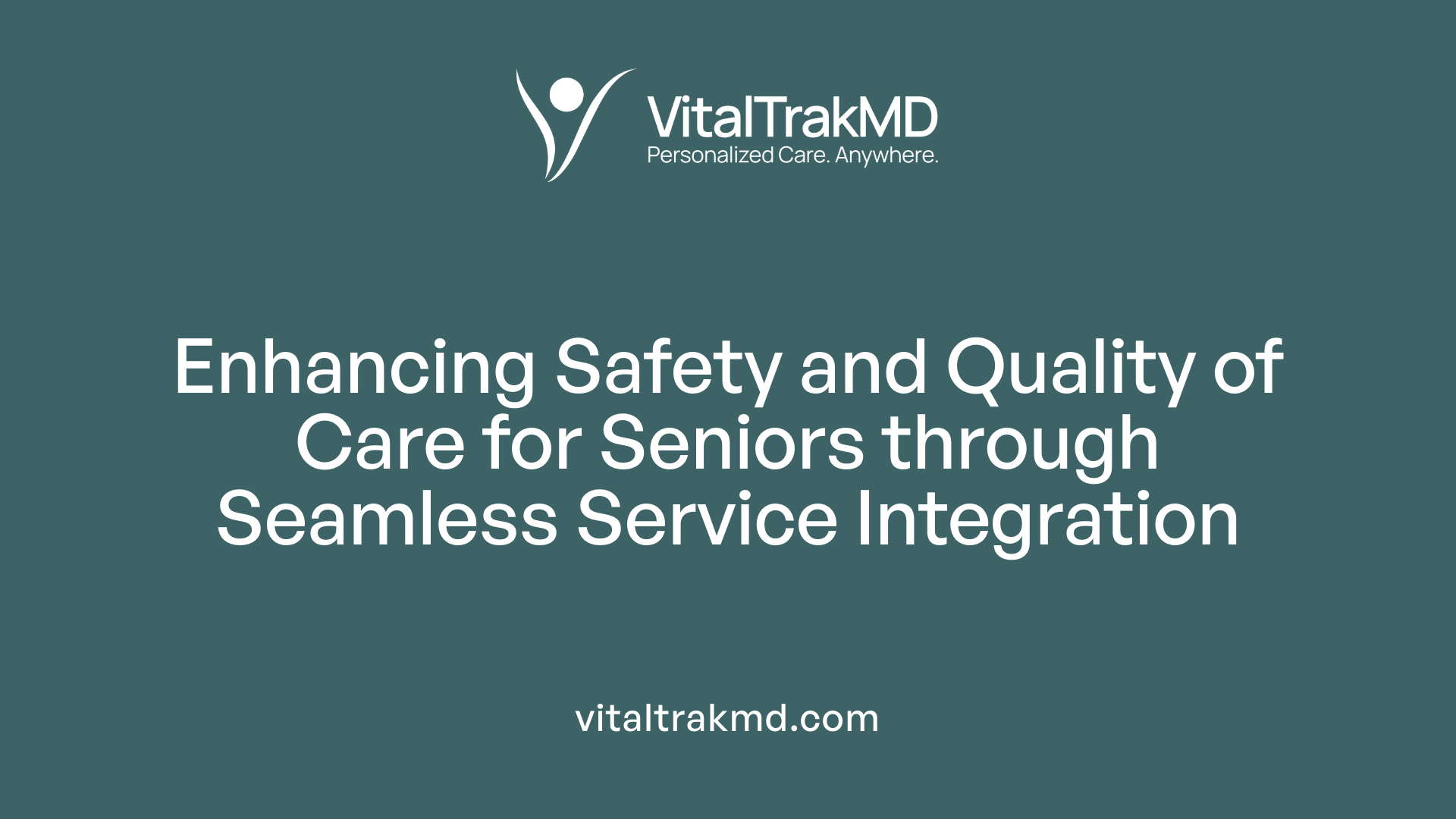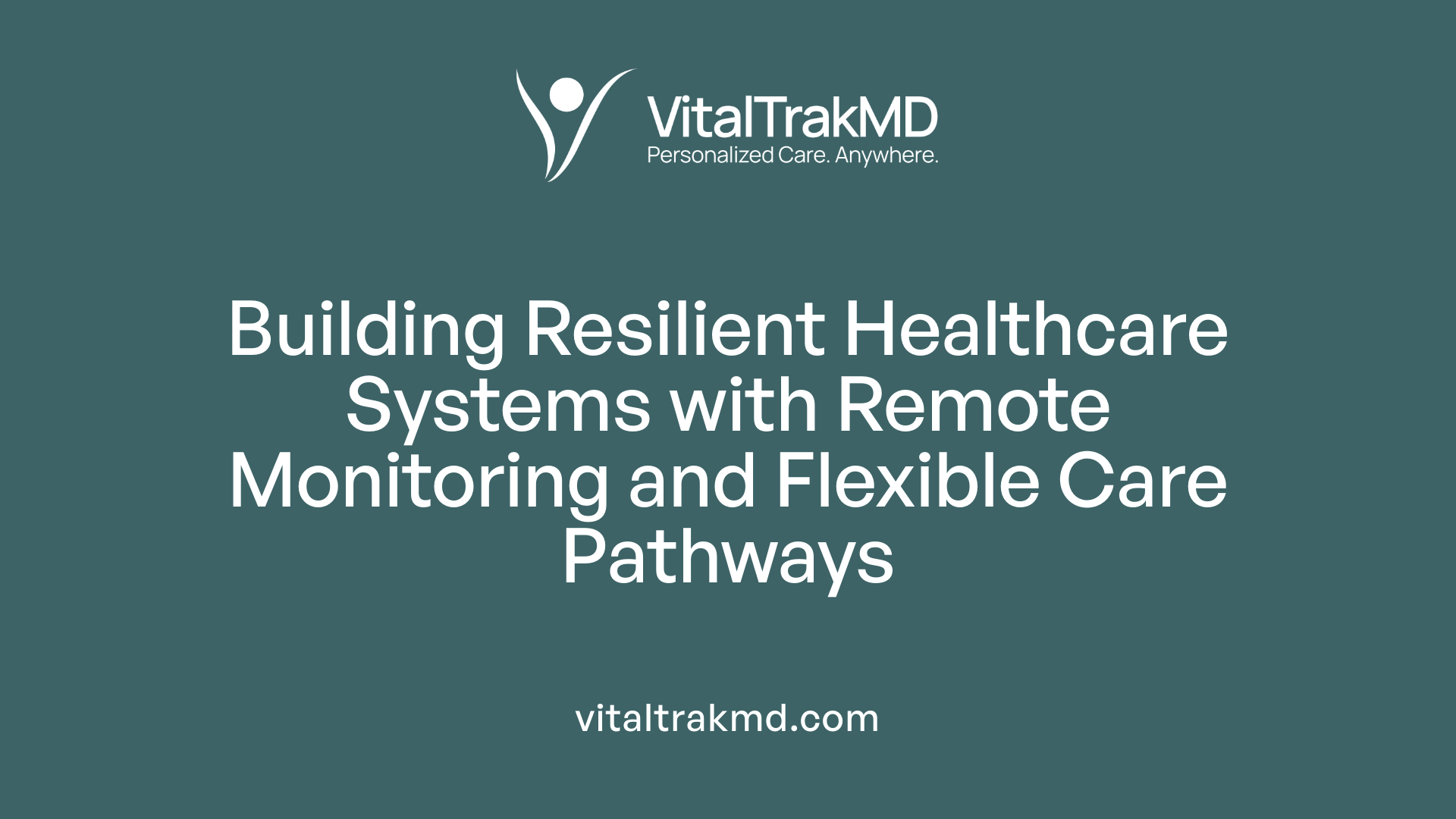How Hybrid Healthcare Promotes Independence While Ensuring Safety

Understanding Hybrid Healthcare: A New Paradigm in Patient Care
Hybrid healthcare combines traditional in-person visits with innovative digital tools to create a flexible, patient-centered approach. This model has gained prominence, especially following the COVID-19 pandemic, offering benefits in accessibility, safety, and personalized care. By integrating physical and virtual components, hybrid healthcare aims to support patient independence while maintaining high safety standards.
Core Components and Technologies of Hybrid Healthcare
What tools and technologies are used in hybrid healthcare to facilitate autonomous patient care?
Hybrid healthcare relies on a range of innovative tools and digital systems to deliver personalized and continuous patient care. Telehealth platforms serve as the foundation for virtual consultations, enabling patients to connect with healthcare providers from home via secure video conferencing. Remote patient monitoring devices, such as wearable blood glucose monitors, heart rhythm sensors, and exercise trackers, provide real-time data that helps clinicians assess patients’ health status without the need for in-person visits.
Electronic health records (EHRs) are crucial for seamless data sharing across healthcare teams, ensuring that patient information is readily available and coordinated. Virtual triage systems and online appointment scheduling streamline the patient journey, reducing wait times and optimizing provider workflows. Secure messaging and asynchronous communication tools allow ongoing patient-provider interaction outside of traditional appointment times.
Additional technologies like motion capture, online educational resources, and remote therapeutic monitoring support patient engagement, rehabilitation, and chronic disease management. These digital solutions enhance the efficiency, security, and accessibility of care, making it possible for patients to receive high-quality services whether they are at home or in a clinical setting. Overall, integrating these tools into hybrid healthcare models promotes more autonomous, personalized, and convenient care experiences.
Impact of Hybrid Healthcare on Patient Safety and Quality of Care in Senior Populations

How does integrating in-hospital, outpatient, and home-based services improve safety?
Hybrid healthcare allows seamless coordination across different care settings, which is especially beneficial for seniors. By combining in-hospital, outpatient, and home-based services, healthcare providers can ensure continuous patient monitoring and timely intervention. For example, remote patient monitoring devices assess blood glucose, heart rhythms, and activity levels, alerting caregivers to any signs of deterioration. This interconnected system enables early risk detection and prevents hazards before they escalate.
Furthermore, designing environments with features like virtual beds and remote inpatient management supports scalability and flexibility. These adaptations help manage patient flow effectively, reduce overcrowding, and ensure that older adults receive safe, appropriate care whether in hospital or at home.
How does continuous monitoring and risk assessments prevent hazards?
Continuous monitoring plays a crucial role in safeguarding seniors' health. Through wearable devices, remote sensors—such as fall detection pendants, door sensors, and help buttons—collect real-time data, which is transmitted via connected apps. When abnormalities arise, alerts prompt immediate action, reducing the risk of falls, medication errors, or delayed treatment.
Risk assessments are integrated into daily care routines, allowing caregivers and providers to identify vulnerabilities early. For example, alerts about decreased mobility or cognitive decline enable proactive adjustments in care plans, helping prevent adverse events.
This proactive approach improves safety by reducing emergency incidents, decreasing hospital readmissions, and preserving seniors’ independence.
Why is caregiver participation, training, and a safety culture important?
Caregivers are at the heart of hybrid healthcare's success. Proper training ensures they understand how to operate remote monitoring technologies, interpret alerts, and respond effectively. Building a safety culture that emphasizes shared responsibility enhances vigilance, accountability, and adherence to best practices.
Supportive policies, regular training sessions, and clear protocols foster a safety-oriented environment. With well-trained caregivers and engaged patients, the risk of accidents or medication mishaps diminishes.
Additionally, involving family members and caregivers in care plans strengthens communication and ensures that safety measures are consistently applied. Overall, fostering a patient-first safety culture enhances care quality, reduces preventable incidents, and supports older adults' well-being.
Strategies and Frameworks for Implementing Hybrid Healthcare Models
What strategies are effective for implementing hybrid healthcare to promote safety and independence?
Implementing hybrid healthcare successfully requires a thoughtful approach that emphasizes safety, patient independence, and operational efficiency. One effective strategy is utilizing comprehensive planning and evaluation frameworks such as RE-AIM (Reach, Effectiveness, Adoption, Implementation, Maintenance) and CFIR (Consolidated Framework for Implementation Research). These tools help healthcare providers identify potential barriers, facilitators, and pathways for successful integration of virtual and in-person services.
Hybrid study designs, especially Type 2 hybrid studies, play a vital role. They enable simultaneous assessment of the clinical effectiveness of care pathways and the practical aspects of implementation. This dual focus accelerates the translation of innovations into routine practice.
Training staff thoroughly is essential. Education should encompass new workflows, technological use, and safety protocols. Equally important is patient education — guiding patients on how to effectively use remote monitoring devices and virtual visits promotes engagement, safety, and independence.
Supporting technologies, such as user-friendly apps, secure messaging, and wearable health devices, facilitate continuous monitoring and easy communication. Ensuring equitable access to these digital tools minimizes disparities and fosters inclusive care.
Successful implementation also depends on ongoing evaluation. Monitoring outcomes like patient safety, satisfaction, and digital literacy helps identify areas for improvement. Adjustments based on real-time data ensure the model remains responsive and safe.
In summary, combining structured frameworks with targeted training, patient engagement, and continuous evaluation fosters a hybrid healthcare environment centered on safety and promoting patient independence.
Supporting Independence and Safety through System Design and Care Pathways
 How do hybrid healthcare models support patient independence and safety?
How do hybrid healthcare models support patient independence and safety?
Hybrid healthcare models bolster patient independence and safety by blending the strengths of traditional in-person care with innovative digital tools. Patients benefit from continuous monitoring through remote devices that assess blood glucose, heart rhythms, and exercise performance. These technologies allow individuals to manage their health more proactively while receiving timely support from healthcare providers.
Programs such as hospital-at-home or home hospitalization exemplify the flexibility of hybrid models, offering personalized treatment outside traditional hospital settings. This reduces risks associated with prolonged hospital stays, like infections, and increases comfort by allowing care in familiar environments. The infrastructure supporting these services—like virtual beds and scalable digital platforms—ensures adaptable and safe care pathways.
Overall, these integrated, technology-enabled approaches empower patients to take charge of their health, maintaining safety through constant oversight and tailored interventions.
Scholarly Insights and Future Perspectives on Hybrid Healthcare

What are the scholarly insights into how hybrid healthcare supports independence and safety?
Scholarly research underscores that hybrid healthcare models, such as hospital-at-home programs, greatly enhance patient independence and safety. These models utilize Healthcare 4.0 technologies—integrating advanced data sharing, remote monitoring, and digital communication tools—to provide personalized and continuous care directly in patients' homes.
Evidence from pragmatic clinical trials and systematic reviews shows that hybrid approaches can lead to reductions in mortality and hospital readmissions. They also help lower healthcare costs and increase patient satisfaction by offering greater convenience and reducing travel burdens.
Remote doctor visits, real-time health data from wearable devices, and virtual support from multidisciplinary teams enable timely medical interventions. This proactive care reduces the risk of adverse events and complications, maintaining a high standard of safety.
Moreover, these systems promote a culture of safety and transparency, empowering patients and their caregivers. Trust is strengthened through reliable data exchange and consistent communication, fostering a sense of security.
In conclusion, integrating hybrid healthcare with innovative technologies not only supports patient independence but also improves safety outcomes, creating a more efficient, patient-centered health system.
Enhancing Care Resilience and Response Capabilities

How do remote monitoring, virtual hospitals, and flexible care pathways contribute to hybrid healthcare's effectiveness?
Remote monitoring, virtual hospitals, and adaptable care plans are transforming healthcare by making it more flexible and responsive. Remote monitoring devices can track vital signs like blood glucose levels, heart rhythms, and exercise performance, providing real-time data that helps clinicians assess patient progress without physical visits.
Virtual hospitals extend the reach of traditional healthcare, especially through models like Mayo Clinic’s Acute Care from Home (ACH), which delivers hospital-level care remotely. These systems allow continuous patient observation, rapid intervention, and reduce hospital readmissions, as shown by low mortality rates in these programs.
Flexible care pathways in hybrid healthcare enable personalized treatment plans. Patients can start with an in-person assessment and then switch to telehealth follow-ups when appropriate. This approach enhances safety, optimizes resource use, and increases patient satisfaction.
Together, these innovations bolster the overall effectiveness of hybrid healthcare by improving coordination across services. They foster greater patient independence and enable healthcare systems to better manage crises, such as pandemics. The integration of remote technologies and adaptable pathways results in a more resilient system capable of delivering safe, efficient, and patient-centered care.
Concluding Remarks: The Future of Hybrid Healthcare
Hybrid healthcare represents a transformative approach that champions patient independence while upholding safety standards. Through innovative technologies, strategic design, and seamless integration of physical and virtual care, it caters to diverse patient needs and adapts to evolving healthcare landscapes. As the model continues to evolve, supported by ongoing research, technological advancements, and policy adaptations, hybrid healthcare has the potential to redefine access, quality, and safety in healthcare delivery, especially for vulnerable populations like seniors and those with chronic conditions. Embracing this paradigm shift can lead to more resilient, efficient, and patient-centered healthcare systems in the future.
References
- What Is Hybrid Healthcare? - AC Health
- Designing for flexibility in hybrid care services - PubMed Central
- Hybrid individual event monitoring enhances resident ...
- How the hybrid healthcare model is transforming patient ...
- Hybrid Healthcare
- Effectiveness-implementation Hybrid Designs
- The use of implementation science theoretical approaches in ...
- An Introduction to Effectiveness-Implementation Hybrid ...
Recent articles
Want to Feel Better and Live Healthier?
Join hundreds of patients taking control of their health with personalized care that fits their life – not the other way around.
Rated 4.8/5 by 32+ customers







